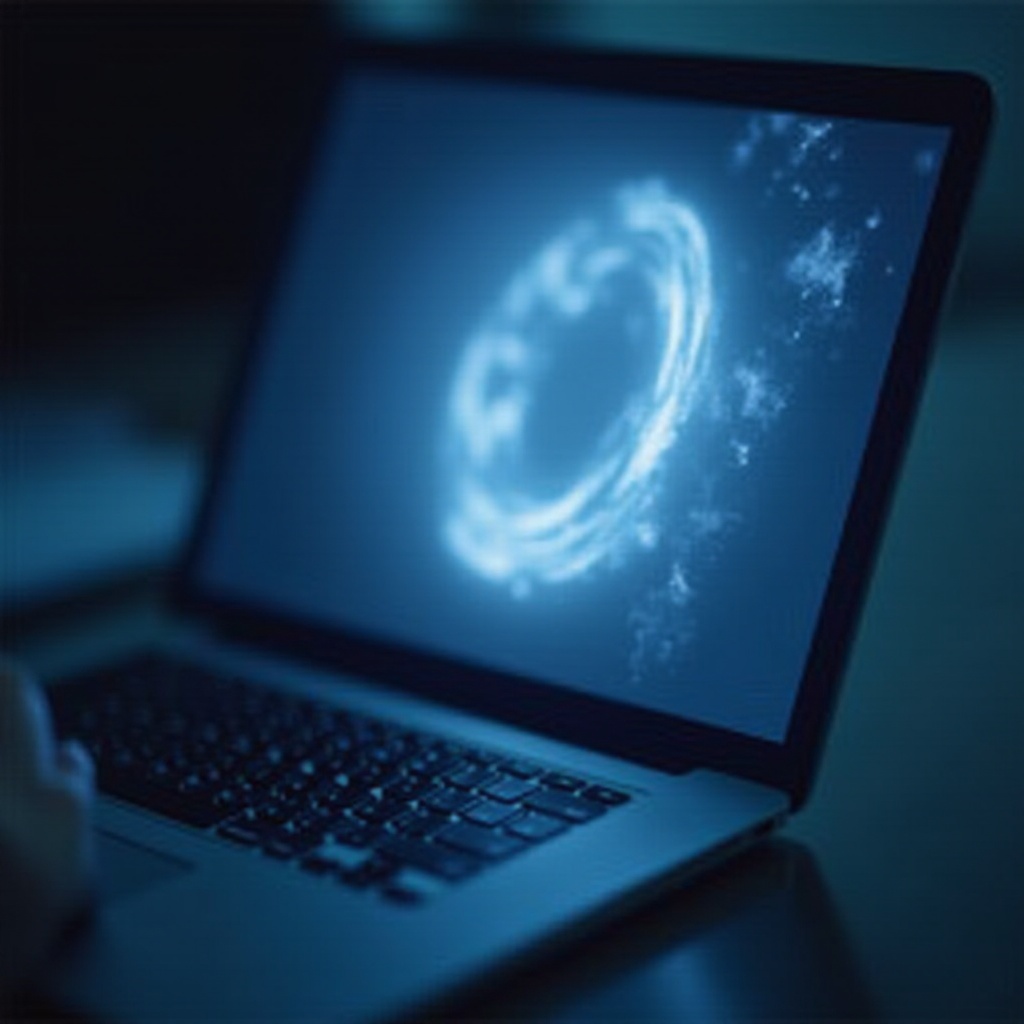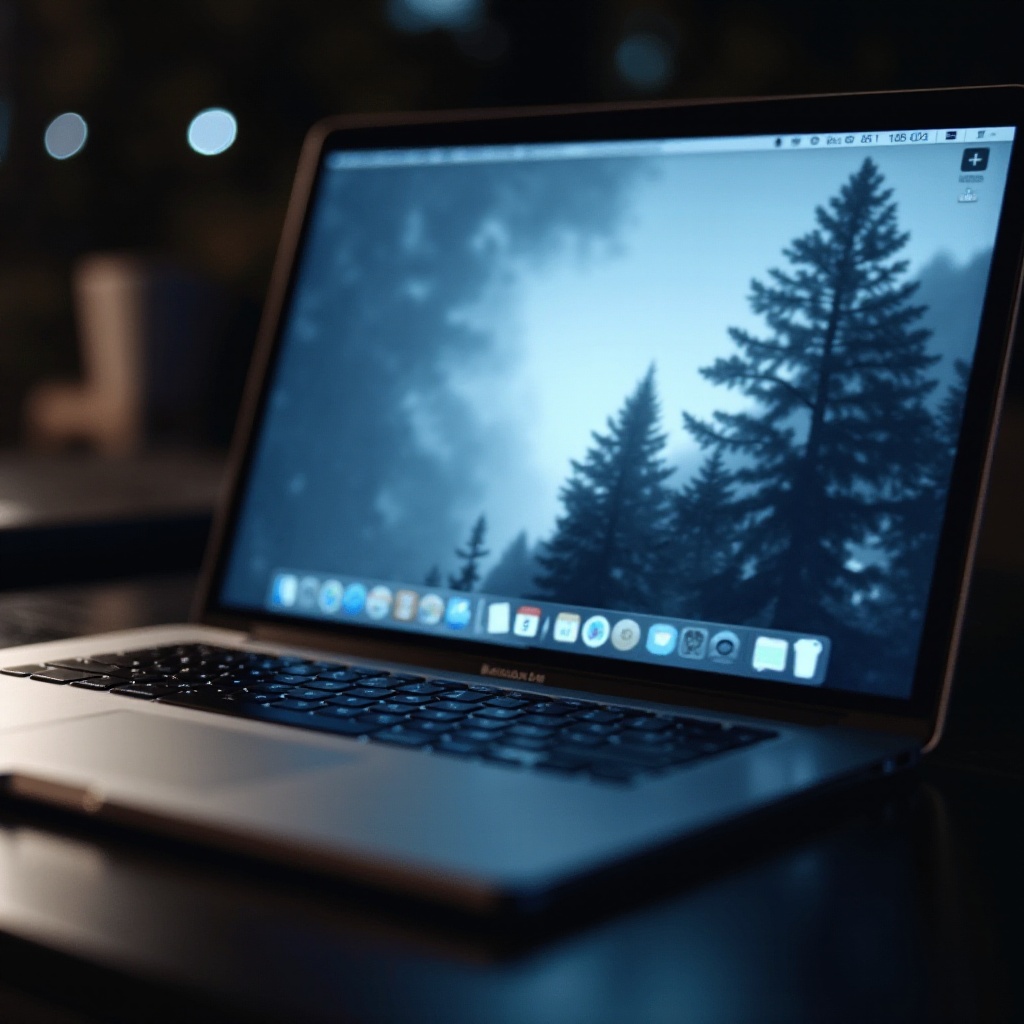Introduction
Screen ghosting often troubles MacBook Pro users, impacting both the display quality and the overall user experience. This issue manifests as a faint, lingering image on the screen, often frustrating users who depend on their devices for both professional and personal use. Understanding the causes of ghosting and knowing the options to remedy and prevent it are vital in maintaining your MacBook Pro’s display health. In this comprehensive guide, we will delve into what screen ghosting is, how to spot it, and share proven methods for resolving and preventing this unwanted phenomenon.

What is Screen Ghosting on the MacBook Pro?
Screen ghosting is a display problem where previous images remain visible on the screen even after they have changed. This might appear as faint outlines or shadows, creating a distorted viewing experience that can be particularly concerning given the MacBook Pro’s high reputation for display quality. While not exclusive to MacBooks, ghosting can vary significantly in severity, often worsening if not promptly addressed. Recognizing screen ghosting is your first step toward tackling potential issues and preserving the performance of your MacBook Pro.
Identifying Ghosting on Your MacBook Pro
Detecting screen ghosting entails some focused observation. Typically, users spot images lingering while switching applications or after closing a program. Here’s how you can identify ghosting on your device:
- Observe Prolonged Retention: Check if images such as toolbars or windows persist after program changes.
- Examine Color Distortions: Ghosted images may appear faded or discolored, disrupting the visual coherence.
- Check for Shadow Effects: Shadows around images or texts can indicate ghosting.
Noticing these symptoms allows you to pinpoint the issue and understand whether it’s due to hardware or software, which we will explore further.

Common Causes of Screen Ghosting on MacBook Pro
Various factors can contribute to screen ghosting, spanning from hardware issues to software configurations.
Hardware-Related Issues
- Aging Display: Older devices may experience ghosting as the screens age and incur wear.
- Display Defects: Manufacturing defects or damage can cause numerous screen disturbances, including ghosting.
Software Glitches and Settings
- Outdated Software: Running outdated macOS or applications might lead to display anomalies.
- Improper Display Settings: Misconfigured settings could exacerbate ghosting effects by impacting refresh rates and colors.
Understanding these causes aids in choosing suitable correction strategies, ensuring your display returns to optimal function.

How to Fix MacBook Pro Ghosting
Fixing screen ghosting requires various strategies from simple adjustments to complex repairs.
Adjusting Display Settings
- Increase Refresh Rate: A higher refresh rate often mitigates ghosting by refreshing the screen images more rapidly.
- Reset Display Preferences: Resetting to default display settings can eliminate conflicting setups.
Updating Software and Drivers
- Software Updates: Keeping macOS and applications updated stops inconsistencies from manifesting.
- Driver Updates: Updated display drivers enhance compatibility and boost performance.
Advanced Fixes: Hardware Diagnostics and Repairs
- Hardware Check: Use Apple’s diagnostics or contact a technician for possible repairs.
- Professional Repair: Persistent ghosting might need professional intervention to replace or repair faulty components.
These actions can significantly restore screen functionality and address ghosting issues effectively.
Preventative Measures for MacBook Pro Screen Ghosting
Preventing ghosting relies on proactive care and proper settings.
Tips for Screen Care and Maintenance
- Regular Cleaning: Keep your display clean to prevent dust interference in display quality.
- Use Screen Protectors: Screen protectors can guard against scratches and minor damages.
Optimizing Display Settings
- Regular optimizations ensure full compatibility and performance.
- Avoid excess brightness, which helps prolong screen life.
Avoiding Environmental Triggers
- Avoid Humidity: Excess moisture can negatively impact your MacBook’s hardware.
- Manage Lighting Conditions: Ensure workspace light does not create shadows or reflections on your screen.
By adopting these habits, you can safeguard your MacBook Pro against ghosting.
When to Consider Screen Replacement or Upgrading
In certain cases, persistent ghosting may necessitate more permanent solutions such as screen replacement.
Signs It’s Time for a Replacement
- Severe Image Retention: Extensive ghosting that impacts functionality or becomes permanent.
- Irrecoverable Display Issues: Encounters with additional display problems indicating widespread damage.
Evaluating the Cost-Effectiveness of Upgrading
- Cost: Weigh repair costs against new model prices to determine if upgrading provides more value.
- Modern Features: Consider the enhanced functionalities of newer models over repairing an old device.
Knowing when to replace or upgrade ensures continuous high-quality use, balancing performance and cost.
Conclusion
Understanding and managing MacBook Pro ghosting is vital for maintaining its impressive display quality and user experience. By recognizing causes, applying proper fixes, and engaging in preventative measures, you assure your device functions smoothly and distinctly. Remaining proactive not only preserves your MacBook’s performance but extends its lifespan as well.
Frequently Asked Questions
What should I do if ghosting persists after trying all fixes?
If ghosting persists, consult a professional technician for potential hardware faults requiring repair.
Can screen ghosting damage my MacBook Pro in the long term?
Long-term impacts are usually visual disturbances, but persistent ghosting may indicate or lead to wider issues.
Is screen ghosting covered under warranty for MacBook Pro?
Warranty coverage varies; defects may be covered, but age or user-related damage might not. Verify with Apple Support.


